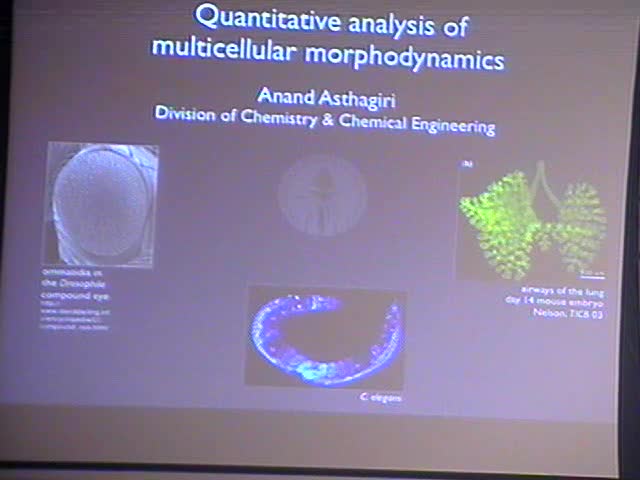Predicting Quntitative Diversification of Multicellular Phenotype
Presenter
April 25, 2008
Keywords:
- Systems biology, networks
MSC:
- 92E10
Abstract
Networks of biological signals guide cells to form
multicellular patterns and structures. Understanding the
design and function of these complex networks is a fundamental
challenge in developmental biology and has clear implications
for biomedical applications, such as tissue engineering and
regenerative medicine. Signaling networks are composed of
highly interconnected pathways involving numerous molecular
components. Precisely to what extent multicellular structures
are susceptible to quantitative variations in underlying
signals and to what extent Nature has utilized this mechanism
of "quantitative diversification" during evolution are unclear.
I will describe a computational framework that we have
developed to explore and to quantify the multicellular
diversity that emerges from signaling perturbations. We have
applied this method to study vulval development in C.
elegans.
The approach is not only effective in predicting the molecular
genetics of multicellular patterning, but also gauges the
capacity of this signaling network for creating phenotypic
diversity. In fact, model predictions strongly correlate to
multicellular phenotypes observed across ten species related to
C. elegans. These results suggest that systems-level modeling
can shed insight into the evolutionary trajectories of
regulatory networks that gave rise to divergent multicellular
phenotypes.
